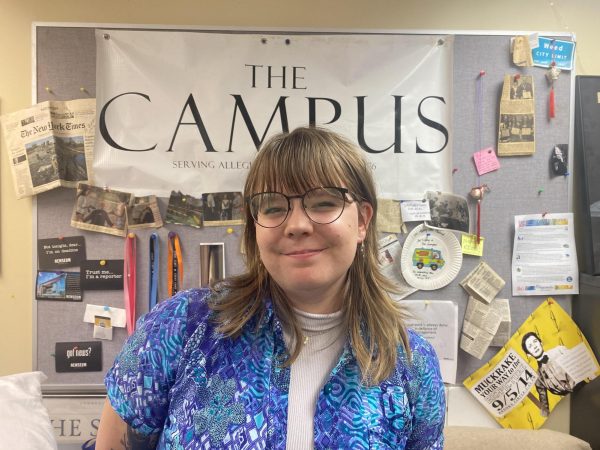One thing I’ve noticed as a freshman on this campus is that the college fails to recognize students’ struggles to pay for their healthcare. Arguably though, the student health insurance, which students are required to have if they don’t have outside insurance, doesn’t actually provide the necessary support students are seeking if they’re paying for the insurance in the first place. The biggest problem I’ve noticed is that the copay for services is too expensive. If a student is paying $2,000 for the insurance out of pocket, it wouldn’t be crazy to assume that the healthcare they receive would be accessible. Spoiler alert: It’s not.
In my experience, getting paid monthly and being a full-time student hinders my ability to get health care. When I went to the emergency room recently, I walked out with no answers and a $400 hospital bill, so I fear I’m already going to be in medical debt at 18. In conversation with other students, I found that I wasn’t the only one feeling incredibly frustrated with the insurance and the lack of affordable healthcare. A friend of mine who is also on the student insurance plan expressed to me that she also found it difficult to get any care for an eye irritation.
According to a study done by students at CUNY Graduate School of Public Health & Health Policy, students who value having health insurance can’t seem to be able to afford it. A student quoted in the study expressed that a sustainable income from a job or otherwise is required to pay for the insurance, and unfortunately for college students that’s not typically attainable.
Additionally, mental health treatment is incredibly costly, and my conversations with other students have led me to realize it’s not something they prioritize — not because they don’t value it, but because they can’t afford it. This semester, I had to cancel my therapy appointments after only three sessions because I already owed $120. That, in combination with the medication I have to pay for — because the student insurance doesn’t cover it — means I can’t afford to use the school’s therapy service. Unfortunately, I’m suffering the consequences.
In the aformentioned study, students reported that they found themselves picking and choosing which of their health emergencies to pay attention to because they couldn’t afford to address all of them. Perhaps the reason college students are typically so depressed is not because of college itself, but because the systems in place force them to ignore their own health.
I find myself struggling to continue being a student in an environment where I cannot afford my medication. And I’m beginning to wonder if part of my stress is because I pay for an insurance plan that I don’t feel supports my health at all.
USA Today reported that in the 2023-24 school year, students at private universities were paying $3,874 for the school-provided health insurance on average. For employees in America, the average amount spent on insurance a year is only $1,327, according to WellHub. If I have to put my employment status as a full-time student on paperwork, shouldn’t my insurance rates be roughly the same as what American employees are spending?
That being said, I’d expect there to be more aid to those who simply cannot afford the coverage, but also somehow land perfectly on the income scale so that they are ineligible for government assistance. If the Affordable Care Act of 2010 suddenly cut uninsured rates for students in half and in turn, increased the number of students under Medicaid assistance — as claimed by The Century Foundation — I find myself questioning how so many students are left behind. In other words, I begin to wonder if we as a nation are ignoring the real needs of our students, and instead enacting legislation we think will make a difference while really making it more difficult to get access to healthcare in the first place.
This is not to say that the ACA and Medicaid are bad ideas. In fact, I agree that these are fundamental, in some regards, to ensuring Americans are covered. However, I wonder if we are possibly taking the wrong approach and leaving students squared away in a corner. For example, if you add the $2,000 out of pocket onto the $70,000 total cost of attendance, the total makes attending Allegheny even less affordable.
I find it worse that when I asked for assistance from school administrators in helping to alleviate my costs, I was given more “resources” that still required a copay of some sort. I am finding myself wondering if, perhaps, it would be more cost-effective to drop the insurance entirely and face the consequences from the school. It is true that a copay for a service is cheaper than an out-of-pocket expense, but when the expense of the insurance itself is out of pocket, how valuable is that service really?
I hope that one day as a nation we put more value on healthcare. I also hope that one day I can get the help I desperately need without paying $400 per visit, but perhaps that is too much to ask.
Categories:
Expensive insurance … for student success?
Story continues below advertisement
3
More to Discover
About the Contributor

Jay Shank, Staff Writer
Jay is a freshman from Pittsburgh, PA. She is majoring in Creative Writing and double-minoring in Education Studies and Women’s, Gender, and Sexuality studies. This is her first semester as a staff writer, and she especially enjoys writing op-ed’s. When she is not writing, she is probably making (and drinking) coffee at Grounds For Change, taking trips with the Outing Club, or hanging out her my friends!




